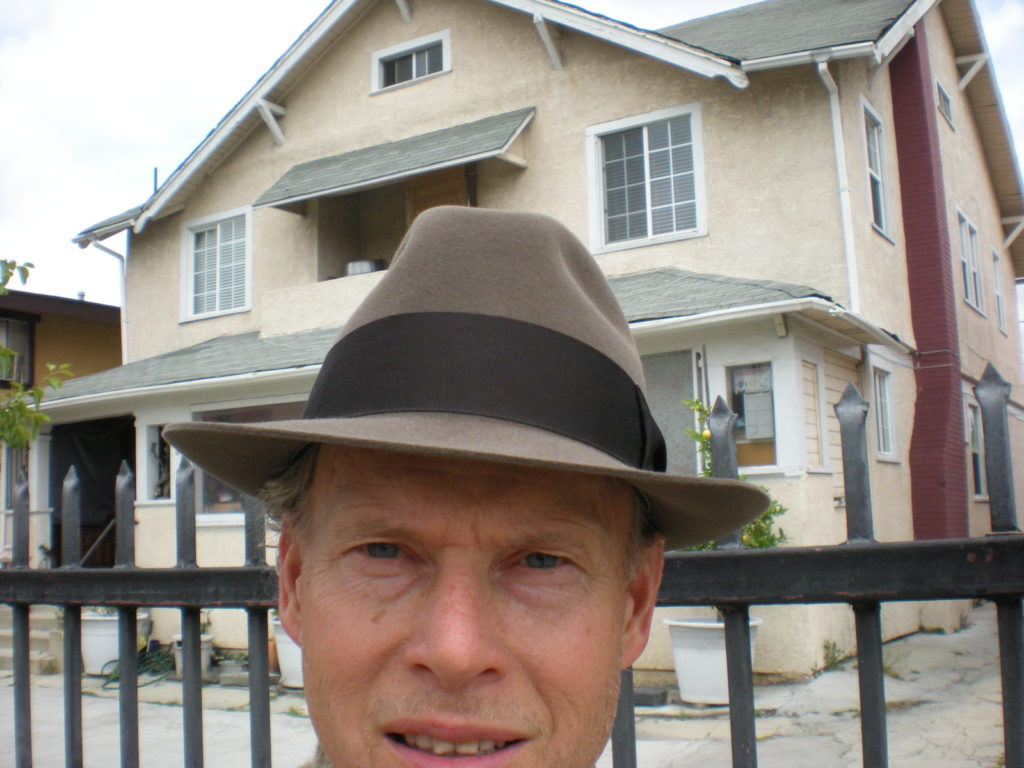UNITED STATES—The end of April, the city was in flames. Incredibly my new city, a week before had suffered an eight-mile explosion when a sewer full of gasoline exploded and left a permanent scar in Guadalajara, April 22.
Then Los Angeles was in flames. A lot of people had seen it coming. “The Day of the Locust,” Nathaniel West had seen in coming. It is a trait of this city that it is always tilting toward chaos, looting, anarchy. It’s a built-in feature of the audacious premise of modern Los Angeles: make a city based on the automobile. It is possible to live without a car. I did, but it’s not really living and you’re a second class citizen. And those that got it flaunt it. It’s a crime and a sin not to be rich in this place.
Then it happens, the pressure builds long enough along the divided tectonic plates and it all goes kerflooey. WATTS, National Guard photo ops. A guy I met on a movie set had been the manager of an appliance store on Washington Boulevard near Central in 1965. When he got to work that morning, people were walking off in with stoves and refrigerators and firearms! He got the word from on high to let it go. And at home maybe someone with backbone refused to have any loot of that provenance, so they fenced it somewhere else. The looters wanted something more than a fridge or a stove or a rifle, anyhow. And the year leading up to the 1992 riots, there were harbingers of trouble like the black man knocking out the Korean man in the B of A branch on Western and Olympic.
Something’s gotta give. And it does. Two, three days it all blows over. After the Rodney King verdict the city went crazy for while, a battering ram jeep to get into a drug store, taking things like styrofoam drink baskets nobody wanted or needed, but they were there, they were snatched with glee. Buildings burnt, people perished.
The flashpoint was Manchester and Vermont, where I’d worked just a year before–a very long year. The surroundings were burnt and hollowed out, a lot of wig stores, liquor stores and storefront churches gutted. And the property at that intersection is still waiting to have something built on it. Empty lots, cheap eighties stucco retail spaces empty and boarded up.
A few weeks later I got a letter from Ron Leaf who lived in the Kenwood house. Now increased in population, Lorna, now married to the young gardener gave birth to a baby girl. She was born healthy and with a mouth, unlike in my strange dream. On the other hand, the dream about the chained courtroom with gasoline poured around the perimeter proved symbolic and hauntingly prophetic.
Ron wrote me that the house on Manhattan Place burnt to the ground. To think that the kitchen that witnessed the drawn knife, the marriage of Dee and Ahmet, and the friction between the actor and wrestler/screenwriter had been reduced to ashes—all that toil of renting rooms, showing them out, making appointments with people who told me their life story and never came—all now a pile of charred brick and ashes… I was gobsmacked.
So I believed it to have been the case for two years till a trip back to Los Angeles when I turned onto Manhattan Place. Imagine my shock when I turned the corner and there was the latte green manse at 1832 Manhattan Place. Ron had referred to the house up the street—that was the one that went up in smoke. That’s kind of funny it would be that house—it was the crack house par excellence and then Wylie had his well laid plans to evict everybody and turn it into a sober living facility. It was a rich irony that never came to fruition. Who can say if one disgruntled former tenant held the torch—one can never say.
The blaze surely was the work of vandals but the evicted and addicted might as well have scratched a match. There was a twisted poetic justice in at all. The one to suffer, along with everyone else, was Jim Wylie. The catastrophe on Manhattan Place forced him to declare bankruptcy.
Grady Miller is a humorist. His latest, “Later Bloomer: Tales from Darkest Hollywood” is available on Amazon.






